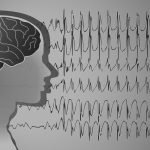Breakthrough Techniques for Managing Fibromyalgia Syndrome
By Kristi Hughes-Hawkes, ND
Fibromyalgia Syndrome
Fibromyalgia Syndrome (FMS) is a multifactorial condition that has become a more prevalent diagnosis over the last decade, as there has been an increase in the number of those suffering from this unique chronic pain and fatigue disorder. Approximately 3-6 million Americans are affected by FMS, and these patients are seeking effective health care from educated providers who understand the pathophysiology of the various types of Fibromyalgia Syndrome.1-2
FMS patients have the characteristic pain of allodynia in which non-noxious stimuli such as light touch are processed as painful.3-4 Carolyn McMakin, MA, DC of the Portland Fibromyalgia and Myofascial Pain Clinic in Portland, Oregon, a leading specialist in treating Fibromyalgia Syndrome, has been published describing Fibromyalgia as “a chronic pain condition that is associated with neuro-endocrine dysfunction and a complex of multi-system symptoms.” In order to be diagnosed as having FMS, a patient must have eleven of the eighteen tender points to less than four pounds per square inch pressure, and a chronic non-restorative sleep disturbance lasting more than three months. Fibromyalgia patients have reduced levels of branch-chain amino acids, reduced serum levels of serotonin, epinephrine, norepinepherine and growth hormone, and increased levels of substance P in the spinal fluid.5 Sleep disturbances, morning sickness, headaches, irritable bowel syndrome, depression, and anxiety are commonly associated with this syndrome.6-7
Current Approaches to Case Management
Conventional approaches to managing this disease have not proven to address the underlying causes of this syndrome and case management, in general, has ignored treatment of the primary functional disorders. The major class of medications prescribed to FMS patients include antidepressants, sleep aids, anxiolytics, sedatives, NSAIDs, and muscle relaxants.8 Despite poor treatment outcomes, health care costs per patient have been documented at $2274/year and the total drain on the U.S. economy is estimated to be over $20 billion.9
Naturopathic and Functional Medicine approaches have proven to address each individual patient’s needs, and through a detailed history that uncovers the primary influences contributing to the decline in health, a personalized plan can be created. Such fields of medicine will utilize nutritional and botanical support to increase the production of ATP, for biotransformation of toxins and hormones, to improve the balance of the HPA (hypothalamic-pituitary-adrenal) axis, and to influence the calming effects of the neuro-endocrine system. Fibromyalgia and Myofascial Pain Syndrome patients both respond favorably to addressing the dysfunctions in the stress response, correcting mitochondrial abnormalities through nutritional support and the use of Frequency Specific Microcurrent, and reversing sarcopenia, or muscle wasting, through lifestyle change programs and exercise.10
History Taking, Antecedents, and Triggers
Successful management of Fibromyalgia Syndrome first comes from taking a detailed history to uncover any of the primary functional medicine influences. The treatment course will depend on the influences the patient has experienced from the environment, various stressors, an accident or injury, infection, toxicity, and genetic patterns. The primary concern facing the muscle tissue in patients with Fibromyalgia include sarcopenia, or type II fiber atrophy, glycogen deposition, mitochondrial abnormalities, and low levels of high-energy phosphates (e.g. ATP).11-14
In your history taking, care should be given to screen for any incidents that could have caused a cervical trauma, or cervical hyperextension. This type of injury has been linked to the development of a cord-mediated pain syndrome, which manifests in severe pain levels and increased inflammatory cytokines.
There may be antecedents present, or predisposing factors, that increase the likelihood of developing Fibromyalgia Syndrome. There are familial patterns that can manifest, including symptoms of depression and insomnia that involve the utilization of tryptophan. Additionally, it is common to observe a childhood exposure to environmental toxins or agricultural chemicals and an early onset of chronic fatigue and pain symptoms. Environmental and occupational toxic exposures, illnesses and infections, childhood stress experiences, vaccinations, hormone dysfunctions, and bouts of insomnia are among some of the antecedents seen in cases of Fibromyalgia.
Various triggers can cause exacerbations and the triggers can be unique for each patient. This insight can provide the clinician with useful information as to which organ systems require strengthening and support, subsequently leading to choices in laboratory assessment and appropriate treatment with nutritional supplements, botanicals, or physical therapy modalities. For example, excessive toxin exposure to numerous toxins that, when ingested, inhaled, or absorbed can result in prolonged firing of peripheral pain receptors, resulting in central nervous system sensitization and exaggerated stimuli response.15-17 According to researchers, increased sensitization and stimuli response are thought to contribute to the chronic pain of FMS(18). Toxin exposure has been suggested to play a significant role in the development and progression of both FMS and Chronic Fatigue Immune Dysfunction Syndrome. Approximately 47% to 67% of FMS patients have reported at least one episode of symptom exacerbation after specific chemical exposure.18-19 In this situation, one might choose to utilize a bifunctional detoxification support formula to improve and balance Phase I bioactivation and Phase II conjugation. When balanced bifunctional detoxification is restored, FMS patients may experience increased energy and vitality.20-22 Detoxification therapies can be designed to lessen exposure to toxins while facilitating the elimination of stored toxins from the body.21
Mitochondrial Support
The treatment approaches for managing all FMS types includes strengthening the mitochondrial function and enhancing the cellular energy output of ATP. Scientists in Sweden have conducted several studies on patients with Fibromyalgia. Muscle morphology, chemistry, and physiology were carefully examined, as were the most prominent symptoms, including muscle pain, muscle fatigue, and muscle stiffness. The authors of a comprehensive review of these studies found that FMS patients appear to have microcirculation disturbances, along with mitochondrial damage and abnormally low phosphate counts—strongly suggesting an energy deficient state in the muscle tissue.11
In alignment with the naturopathic philosophy, the treatment protocol that addresses the cause of the mitochondrial dysfunction and sarcopenia, would include the nutritional factors that play a role in maintaining the integrity and proper functioning of the mitochondria. A combination of nutrients known to positively influence mitochondrial energy production, along with antioxidants, may support a higher rate of ATP synthesis, as well as protect mitochondria from free radicals. Lipoic acid and the B vitamins serve as cofactors for cellular energy production and metabolism. Thiamine supports the activity of enzymes that influence citric acid activity and activates the respiratory chain. Antioxidants such as coenzyme Q10, L-glutathione, N-acetylcysteine, and vitamins C and E help protect oxidative damage that can affect cellular and/or mitochondrial function negatively.23-26
The Fibromyalgia Types
There are common occurrences found in FMS patients, although the etiology of the disease is considered to be unknown. Dr. McMakin in her publication in July 2005, Journal of Bodywork and Physical Therapy explains, “In our Fibromyalgia clinic we have identified five distinct etiologies of FMS. One is associated with prolonged emotional or physical stress and the subsequent adrenal depletions, leaky gut and food allergies. One is associated with exposure to organic chemicals, heavy metals, or pesticides. One appears to be genetic and seems to be associated with food allergies or with increased need for enzyme substrate in the liver detoxification pathways or serotonin pathways. One type occurs after immunizations or viral illness. And there is one type of FMS that occurs after whiplash injuries, cervical trauma or after surgery. The post-surgical cases are thought to occur when the head is hyper-extended during intubation and constitutes a cervical injury”.26
Cervical Trauma Fibromyalgia Type
The Cervical Trauma Fibromyalgia type will usually begin with a headache, neck and shoulder tension, mid-scapular pain which will often generalize to an all over body ache and fatigue syndrome within six months of the injury. The pain levels average between 4 and 9 out of a 10 level. This unique type of cervical trauma stems from a cervical extension injury that creates a crack in the annulus or a fracture in the endplate that exposes the nucleus pulposus to the cerebral spinal fluid.27 There is often a unique distribution of pain that can include a chronic headache along with a burning sensation on the palms, the plantar surface of the feet, the mid-scapular and low back regions. The nucleus pulposus causes an inflammatory response in nerve tissue, propagating the pain response.28
Frequency Specific Microcurrent
Progressive treatments using Frequency Specific Microcurrent have been found to be extremely effective in addressing the muscular pain and elevated cytokines, while increasing the ATP output to support the tissue healing. A study performed on rat skin by Cheng et al. found that Microcurrent therapy using 50-1,000 microamps of electricity can increase ATP production three- to five-fold; augment membrane transport, which helps to increase nutrients to the area; and boost protein synthesis in animal skin.29
To further your knowledge, utilize the website for a detailed review of the Frequency Specific Microcurrent Technique, the equipment utilized in treatment, training courses, and the paper “Cervical Trauma and Chronic Pain Fibromyalgia Caused by Cervical Injury”.26 This 14 page article will detail the neuroanatomy and pathophysiology of this disorder and offer clinical insights to management of this unique type of FMS.
In Review
An effective naturopathic functional medicine approach to managing chronic pain and fatigue found in the Fibromyalgia Syndrome includes utilizing a quality multivitamin and multimineral, providing mitochondrial antioxidants, supporting the muscular system with a malic acid/magnesium complex, eliminating toxin exposures with a bifunctional detoxification support formula, balancing an up-regulated sympathetic nervous system and altered HPA axis, and increasing cellular energy and ATP production with nutritional supplementation and Frequency Specific Microcurrent.10,30
 Kristi Hughes-Hawkes, ND is a 1997 graduate from National College of Naturopathic Medicine, an AFMCP graduate in Functional Medicine, and an international lecturer on various natural health care approaches to managing chronic diseases. She is the founder of The Healing Center; Your Center of Natural Healing with clinic sites in Alexandria and Moorhead, Minnesota. Contact can be made through.
Kristi Hughes-Hawkes, ND is a 1997 graduate from National College of Naturopathic Medicine, an AFMCP graduate in Functional Medicine, and an international lecturer on various natural health care approaches to managing chronic diseases. She is the founder of The Healing Center; Your Center of Natural Healing with clinic sites in Alexandria and Moorhead, Minnesota. Contact can be made through.
References:
1. Rooks DS, Silverman, CB, Kantrowiz FG. The effects of progressive strength training and aerobic exercise on muscle strength and cardiovascular fitness in women with Fibromyalgia; a pilot study. Arthritis Rheum 2002;47(1):22-28
2. Jones KD, Burckhardt CS, Clark SR, et al. A randomized controlled trial of muscle strengthening versus flexibility training in fibromyalgia. J Rheumatol 2002;29:1041-48
3. Kandel E, Schwart J. Principles of Neural Science, second edition. Elsevier Science Publishing Co., Inc., New York, 1985: 331-336
4. Bennett RM: Emerging concepts in the neurobiology of chronic pain: evidence of abnormal sensory processing in fibromyalgia. Mayo Clinic Proceedings 1999;74:385-398
5. Henrikson KG, Bengtson A. Fibromyalgia — a clinical entity? Can J Physiol Pharmacol 1991;69:672-77.
6. National Institute of Arthritis and Musculoskeletal Skin Diseases. National Institutes of Health. Fibromyalgia. Retrieved on July 2, 2002 from, http://www.niams.nih.gov/hi/topics/fibromyalgia/fibrofs.htm
7. Arthritis Foundation Disease Center. Fibromyalgia. Retrieved July 22, 2002 from
8. Arthritis Foundation. Fibromyalgia Medications. Retrieved July 22, 2003 from, ()
9. Thorson K. Fibromyalgia Syndrome (FMS) political case statement. Retrieved March 6, 2002 from
10. Hawkes, KJ. Natural therapies for fibromyalgia syndrome. Applied Nutritional Science Reports 2003;1-7
11. Bengtson A, Henrikson KG. The muscle in fibromyalgia–A review of Swedish studies. J Rheumatol 1989;16 (Suppl 19):144-49.
12. Littlejohn GO, Walker J. A realistic approach to managing patients with fibromyalgia. Curr Rheumatol Rep 2002:4(4):286-92.
13. Dessein PH, Shipton EA, Joffe BI, et al. Hyposecretion of adrenal androgens and the relation of serum adrenal steroids, serotonin and insulin-like growth factor-1 to clinical features in women with fibromyalgia. Pain 1999;83(2):313-19.
14. Crofford LJ. The hypothalamic-pituitary-adrenal stress axis in fibromyalgia and chronic fatigue syndrome. Z Rheumatol 1998;57 (Suppl 2):67-71.
15. Bennett GJ. Update on the neurophysiology of pain transmission and modulation; focus on the NMDA-receptor. J Pain Symptom Manage 2000;19(Suppl 1):S2-S6.
16. Pall ML. Common etiology of posttraumatic stress disorder, Fibromyalgia, chronic fatigue syndrome and multiple chemical sensitivity via elevated nitric oxide/peroxynitrite. Med Hypothesis 2001;57(2):139-45.
17. Ursin H, Eriksen HR. Sensitization, subjective health complaints, and sustained arousal. Ann N Y Acad Sci 2001;933:119-29.
18. Bell IR, Baldwin CM, Schwartz GE. Illness from low levels of environmental chemicals: relevance to chronic fatigue syndrome and Fibromyalgia. Am J Med 1998;105(Suppl 3A):74S-82S.
19. Buchwald D. Garrity D. Comparison of patients with chronic fatigue syndrome, fibromyalgia, and multiple chemical sensitivities. Arch Intern Med 1994;154(18):2049-53
20. Donaldson M, Speight N, Loomis S. Fibromyalgia syndrome improved using a mostly raw vegetarian diet: an observational study. BCM Complement Altern Med 2001;1(1):7
21. Bland JS, Barrager E, Reedy RG,et al. A medical food-supplemented detoxification program in the management of chronic health problems. Altern Ther Health Med 1995;(5):62-71
22. Rigden S. Entero-hepatic resuscitation program for CFIDS. The CFIDS Chronicle 1995;Spring 46-49.
22. Kwong LK, Kamzalov S, Rebrin I, et al. Effects of Coenzyme Q(10) administration on its tissue concentrations, mitochondrial oxidant generation, and oxidative stress in the rat. Free Radic Bio Med 2002;33(5):627-38
23. Dlugosz A, Piotrowska D. Lipid peroxidation stimulated by Solvesso, Bawanol and methanol, and its conteractions by antioxidants in human placental mitochondria. Toxicol In Vitro 2002;649-56.
24. Custodio JB, Cardoso CM, Almeida LM. Thiol protecting agents and antioxidants inhibit the mitochondrial permeability transition promoted by etoposide: implications in the prevention of etoposide-induced apoptosis. Chem Biol Interact 2002; 140(2):169-84
25. Nakai A, Shibazaki Y, Taniuchi Y, et al. Vitamins ameliorate secondary mitochondrial failure in neonatal rat brain. Pediatr Neurol 2002;27(1):30-35
26. McMakin, Carolyn. Cervical trauma and chronic pain fibromyalgia caused by cervical injury. Journal of Bodywork and Physical Therapy. 2005
27. Netter F: Atlas of Human Anatomy, Ciba-Geigy, 1991, plate 159
28. Olmarker K, Blomquist J, Stromberg J, Nannmark U, Thomsen P, Rydevik B. Inflammatogenic properties of nucleus pulposus. SPINE 1995;20:665-669
29. Cheng N, Van Hoof H, Bockx E, et al. The effects of electric currents on ATP generation, protein synthesis, and membrane transport of rat skin. Clin Orthop Relat Res 1982;(171):264-72.
30. Abraham GE, Flechas JD. Management of fibromyalgia: rationale for the use of magnesium and malic acid. J Nutr Med 1992;3:49-59.







